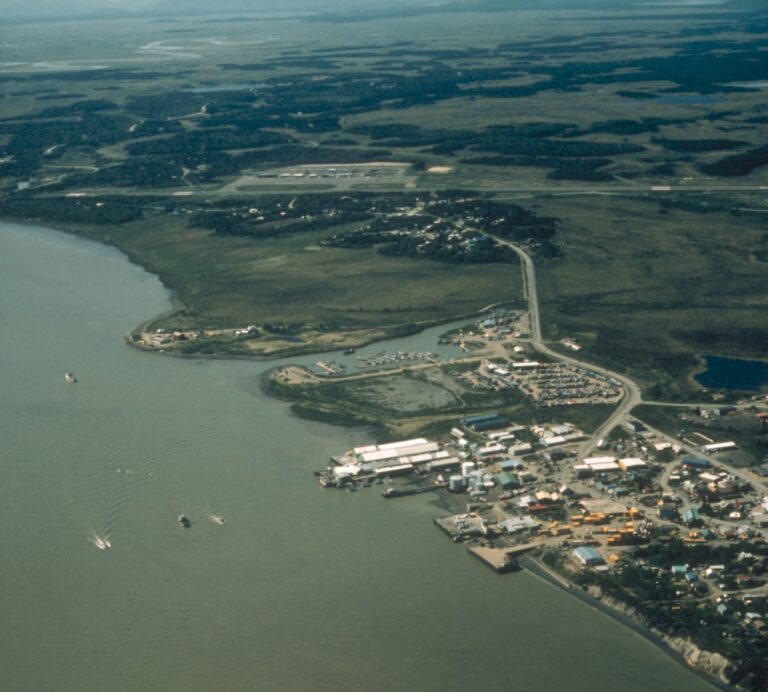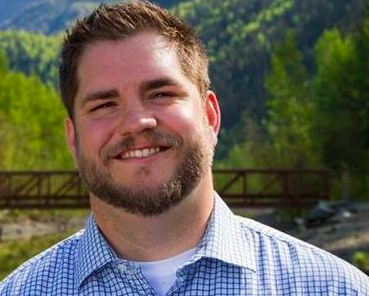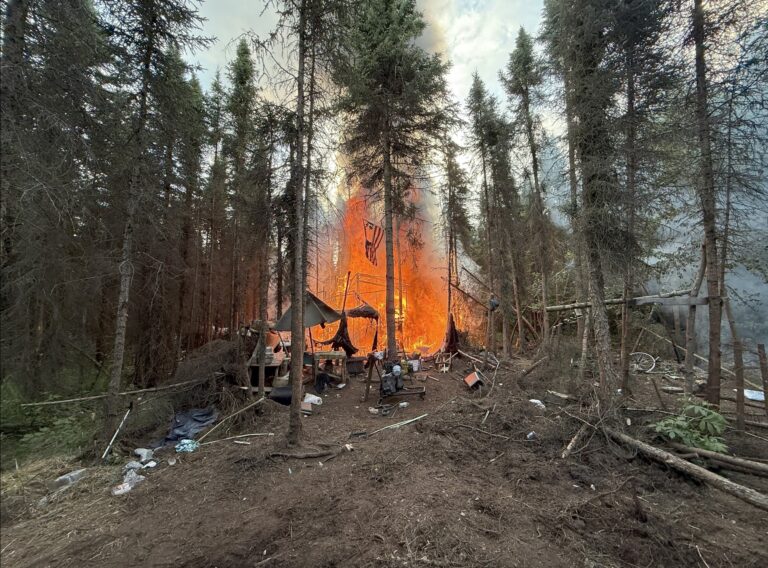By MICHAEL TAVOLIERO
Despite being the most resource-rich state in the nation, Alaska faces looming failures, one not born of scarcity, but of inaction, regulatory stagnation, risk-averse utility policy, and dare I say, stupidity. The state’s immense reserves of hydropower, coal, and nuclear potential are being left untapped while our energy infrastructure frays under pressure and global competition intensifies.
If Alaska continues down its current path, it will follow the fate of states like California, New York, Connecticut, Massachusetts, and Rhode Island, jurisdictions that have hamstrung themselves with ideological energy mandates and now suffer from high costs, import dependency, and grid instability.
Though Alaska remains largely energy self-reliant for now, the window for preserving this advantage is rapidly closing. Our major electric utilities, Chugach Electric Association, Matanuska-Susitna Electric Association, and Golden Valley Electric Association, have oriented their long-term planning around intermittent renewables and storage technologies while abandoning or avoiding traditional, reliable baseload options like hydroelectric, coal-fired, and nuclear power.
These decisions are not the result of technological limitations or natural constraints; they stem from a lack of policy direction, an overreliance on federal stopgaps, and a growing fear of political and environmental manufactured controversy.
State law broadly supports the development of “renewable and nonrenewable energy resources” and encourages private investment in energy infrastructure. Yet these words ring hollow without mandates, incentives, or strategy. In practice, our utilities are pursuing renewables-only portfolios while eschewing any serious commitment to dispatchable energy.
Chugach aims for 80% renewable generation by 2040 but has no active coal or nuclear initiatives. MEA’s clean energy strategy omits baseload entirely. Even GVEA, once the stronghold of Interior Alaska’s coal-fired capacity, has adopted a strategic plan that rejects new coal, hydro, or nuclear development. The result? A policy of managed decline in the face of abundant opportunity.
Meanwhile, Alaska’s economic future depends on energy, not just any energy, but stable, low-cost, industrial-grade electricity. Modern economies are built on energy density and availability. Without it, Alaska cannot attract or sustain the industries it needs to survive. Key opportunities, such as rare earth element refining, critical mineral processing, and high-tech manufacturing, all require significant, uninterrupted power, something wind and solar alone cannot provide. Alaska is sitting atop some of the largest reserves of graphite, cobalt, and REEs in the US, but without affordable electricity, these materials will continue to be exported raw or left in the ground, while China tightens its grip on global supply chains.
At the same time, sectors like data infrastructure, AI computing, and blockchain validation are expanding rapidly, but only in places with cheap and reliable power. Alaska’s cold climate, vast land, and strategic location offer enormous advantages, but without grid modernization and investment in scalable baseload power, these industries will bypass us entirely. We will watch as other states like Texas, Idaho, and Wyoming attract the very economic engines that could have transformed Alaska.
Despite being much smaller, Alaska has natural resource wealth per capita and geographic reach (especially Arctic proximity) that rivals major global powers, making strategic energy development in Alaska nationally and geopolitically significant.
And while we naively hesitate, China acts. It is currently building over 200 new coal-fired power plants and scaling up next-generation nuclear capacity at a rate unmatched by any nation. This isn’t a step backward. It’s a strategic leap forward. China understands that cheap, sovereign energy is the foundation of economic security and geopolitical leverage. If Alaska, indeed, if America, refuses to follow suit with our own domestic energy development, we will lose far more than industrial growth; we will lose our ability to self-govern.
Let me be clear: this is no longer a matter of policy preference or partisan ideology. This is a question of survival. Without decisive action, Alaska will become an economically hollow jurisdiction, rich in resources, but unable to power its own future. To stop this, Alaska must immediately:
- Expand hydroelectric infrastructure in Southcentral and Southeast Alaska to provide long-term, clean, dispatchable power;
- Modernize and deploy clean coal-fired generation in the Interior, utilizing Alaska’s massive reserves alongside modern emissions controls;
- Invest in and deploy small modular nuclear reactors (SMRs) to power off-grid communities, military installations, and future industrial zones;
- Integrate and upgrade regional electrical grids, maximizing resilience, redundancy, and cross-utility efficiency.
These aren’t dreams. They’re imperatives. Alaska’s destiny has always been its low-cost energy for its independence.
Alaska’s energy future is on the brink. While political promises fixate on technologies years away, the state urgently needs real, dispatchable power now. Proven solutions, modern coal, hydropower, and nuclear readiness, must be deployed immediately to secure energy independence and economic survival. At the top of that list: modern coal-fired power, hydroelectric infrastructure, and preparation for nuclear deployment.
Coal is Competitive Again If We Let It Be
Contrary to the outdated narrative that coal is an obsolete, dirty relic of the past, recent developments demonstrate that modern coal-fired generation, when implemented with Best Available Control Technology (BACT), can be both cost-effective and environmentally viable. A proposed coal plant across Cook Inlet, currently in its front-end engineering (FEL2) phase, is modeled after a recently completed facility in Gillette, Wyoming, which delivers power at approximately 4.5 cents per kilowatt-hour. That figure is competitive with hydropower and well below the cost of imported diesel or liquefied natural gas in rural and off-grid regions of Alaska.
This type of project, developed privately and structured as an Independent Power Producer (IPP), would sell into the Railbelt utilities, delivering firm baseload energy without saddling the state with public debt. And while initial plans included carbon capture, even without it, BACT-equipped coal presents a compelling emissions profile, potentially superior to natural gas when lifecycle emissions, particularly methane leakage, are factored in. Alaska, home to enormous coal reserves, would be remiss to ignore the opportunity to leverage this resource with modern technology and commercial partnerships.
Hydropower Is the Only Proven Long-Term Option
While coal can offer short- to medium-term energy stability, hydropower remains the most reliable long-term source of renewable baseload energy available in Alaska today. Projects like Susitna-Watana have been studied for decades, demonstrating the potential to generate low-cost, steady electricity for Southcentral Alaska and beyond. Hydropower is not speculative. It is mature, dispatchable, and scalable. It doesn’t require a new technological breakthrough or demonstration project. It requires only political will.
Watana could be transformative. Beyond supplying clean energy, it would serve as the economic anchor for industrial development, regional grid resilience, and long-term price stability. It would make Alaska competitive in attracting industries like mineral processing, advanced manufacturing, and data infrastructure, industries that require constant, high-density power.
Alaska Governor Bill Walker suspended development of the Susitna-Watana hydroelectric project in 2016, citing a so-called state budget crisis. This justification many now view as a political maneuver rather than a fiscal necessity. The only barriers to building Watana are bureaucratic inertia and political hesitation. The project is engineered, litigated, and ready. In a state that talks constantly about economic development, failing to act on Watana is nothing short of self-sabotage.
SMRs Are a Future Worth Preparing For—But Not Relying On
Small Modular Nuclear Reactors (SMRs) represent a promising future for distributed high-output, carbon-free energy in remote and off-grid environments. But that future isn’t here yet. Despite the Department of the Air Force (DAF) piloting nuclear energy technology at Eielson Air Force Base having issued a Notice of Intent to Award (NOITA) to Oklo, Inc. for the construction and operation of an advanced nuclear microreactor there, SMRs remain several years away from commercial deployment.
Optimistically, operational SMRs may begin appearing within 5–7 years, especially in strategic applications like military installations, critical minerals operations, or remote Alaskan villages. But until then, they are a technological bet, not a present solution. Any serious energy strategy must acknowledge that we cannot plug policy gaps with hypothetical reactors. We must build what is viable now and prepare for what’s coming, not the other way around.
Build Now, Plan Smart, and Lead Boldly
Alaska’s energy conversation needs a reset. No amount of slogans or subsidies will stabilize our grid in January. No solar panel can guarantee 24/7 industrial uptime. And no unbuilt SMR will attract the capital or confidence needed to anchor our energy-intensive future.
What will? Building clean coal infrastructure where feasible. Constructing hydropower now. And developing the policy and permitting environment to welcome SMRs when they’re ready.
Alaska doesn’t need another energy plan that sits on a shelf. It needs a power surge, the kind that keeps communities warm, industry humming, and sovereignty intact.








